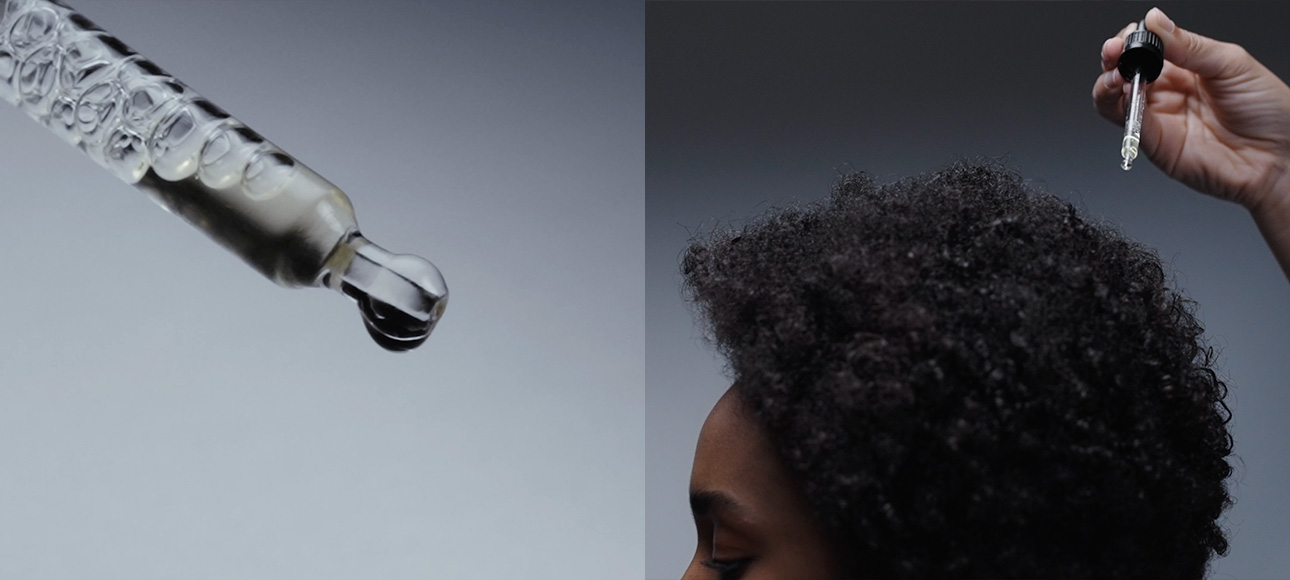
For decades, the most mainstream medical treatments for hair loss have revolved around manipulating our hormones.
However, there’s potential for all that to change after the discovery of PP405. Currently in clinical trials, this new therapy targets follicle regeneration and bypasses the hormonal disruption and undesirable side effects of go-to prescription meds.
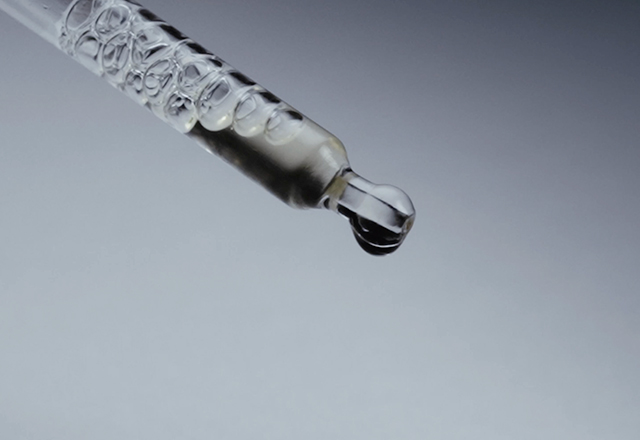
Hormonal hair loss explained
When it comes to progressive thinning and loss, hormones are one of the most common culprits. In both men and women, a by-product of testosterone called dihydrotestosterone (DHT) can bind to receptors in the hair follicle, triggering a process called miniaturisation. Over time, affected follicles produce hairs that are shorter, finer, and more fragile until they eventually stop producing hair altogether.
“In men, DHT sensitivity is the key driver behind male pattern baldness. This can occur in women too, especially during hormonal shifts like during menopause, as this period can tip the balance, increasing the effect of DHT or other androgenic hormones on the follicles. While shifts in oestrogen and progesterone can also alter the growth cycle,” explains Ricardo Vila Nova.
Current prescription medications like finasteride and dutasteride work by reducing DHT production, while oral spironolactone (used off-label in women) blocks its effect at the follicle. “They can be very effective, but they also alter hormone levels, which not everyone is comfortable with,” Vila Nova says. “Plus, there’s far too much guess work used when prescribing them. For example, if someone has a thyroid issue, blood is taken to measure thyroid function and then the medication dosage will reflect what is needed to balance the thyroid hormones. But that doesn’t happen when hair loss medications are sold or prescribed. Not only are people not getting the right doses of what they need, they are also generally very unaware of the side effects like changes in libido, mood, or menstrual cycle. And that’s why my clinic treatments, don’t involve the use of medication, only bio identical formulations,” adds Vila Nova.
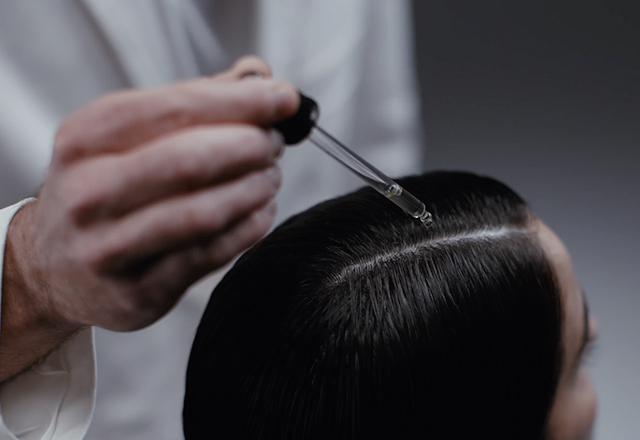
What is PP405?
PP405 is an exciting compound discovered during research into cellular ageing and tissue repair. Scientists noticed that certain bioactive molecules could ‘wake up’ dormant cells in skin and hair follicles, prompting them to behave more like their younger, more active selves.
“Early studies suggest it works by activating specific molecular signals within the follicle that encourage it to remain in the growth phase for longer and to regenerate more efficiently after shedding,” explains Vila Nova. “Interestingly it’s not a hormone or a hormone blocker, it’s a regenerative signal booster, which makes it a completely different category from medications like finasteride,” adds Vila Nova.
It’s currently in its second stage of clinical testing, where it’s been used to target the biological pathways involved in follicle ageing and dormancy. And because PP405 doesn’t just halt loss, but actively restore activity in follicles that were slowing down – it’s already making so much noise.
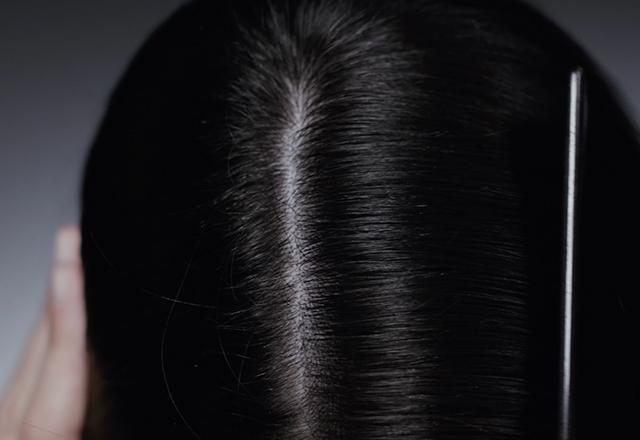
Who could benefit from PP405?
While final clinical data is still to come, PP405 effectiveness is currently being studied in those with androgenic alopecia. But it could potentially benefit a range of hair loss types by preserving and reactivating vulnerable follicles. For example, its mechanism may also make it useful in post-inflammatory hair loss or in supporting regrowth after traction alopecia, where follicles have been under prolonged stress.
And because it doesn’t rely on manipulating hormones, PP405 may be suitable for people who can’t take, or choose not to take the current hormone targeting medications on offer. This could make it a valuable option for women of childbearing age, men concerned about side effects, and anyone who prefers a non-hormonal route.
However, Vila Nova warns, “it’s unlikely to be a magic bullet for every kind of alopecia. But, if it can safely protect follicles from miniaturising and help them recover from damage, its impact could be significant.”
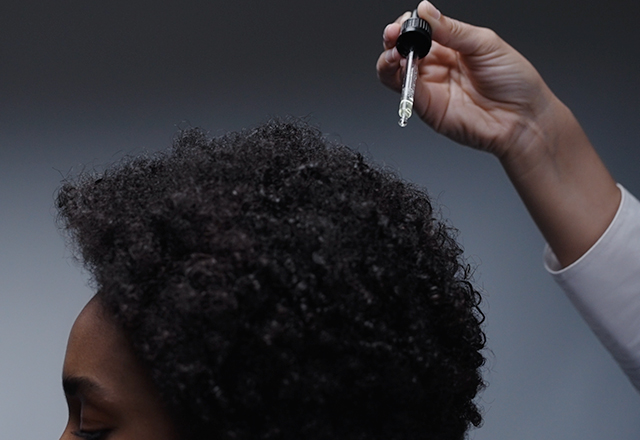
Why you can’t get it yet
PP405 is still undergoing safety and efficacy trials, which means it’s not available to the public. If approvals are granted, it’s likely to be several years – Vila Nova estimates around five – before it reaches the market. “The regulatory process is there to make sure a treatment works as claimed and won’t cause harm,” he says. “It’s frustrating when you’re losing hair now, but it’s essential.”
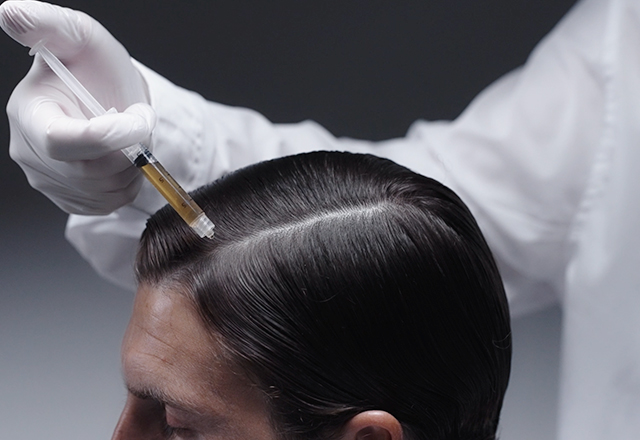
What to do now if you want to avoid hormone-based drugs
Here’s where Vila Nova’s prevention-first philosophy comes into play. “The best time to act on hair loss is always before you think you need to,” he says. “If you wait until you’ve lost half your density, you’ve already lost half your options. The earlier we step in, the more of your hair we can preserve, and the less you’ll need to rely on stronger interventions down the line.”
At 212.2 Ricardo Vila Nova, prevention starts with detailed diagnostic testing. This goes beyond a visual check, but rather, it involves the Hair DNA Scan. A molecular-level assessment that identifies protein depletion, collagen breakdown, mineral imbalances, genetic traits, hormonal issues, adrenal stress, and early inflammatory changes that can compromise follicle performance. “It’s like a health check for your hair,” Vila Nova explains. “Once we know exactly what’s going wrong, we can create a plan that directly addresses it.”
That plan often includes:
Restoring the scalp environment: Treatments to remove stubborn scalp buildup, rebalance the skin’s microbiome, and improve microcirculation so follicles receive optimal oxygen and nutrient flow.
Regenerative stimulation: Technologies such as microneedling, low-level light therapy, PRP, biosomes, growth factors, amino acids and peptides, are used to reactivate repair processes by stimulating follicles.
Nutritional optimisation: Correcting deficiencies in iron, vitamin D, protein, zinc, and other hair-critical nutrients that, if left unchecked, can accelerate shedding and weaken regrowth.
Close monitoring: Hair loss rarely happens overnight, so regular reviews to spot subtle shifts in texture, diameter, or growth rate are key. If changes occur protocols can be adapted in real time to protect your hair.
Importantly, Vila Nova stresses that these preventative and regenerative protocols work and shouldn’t be looked at as simply a long-term buffer until PP405 makes it to market.
“Bioidentical technology like stem cells, growth factors, platelet rich plasma, biosomes, peptides, and amino acids, are proven to be more efficient when it comes to hair regeneration without the collateral damage of hormonal therapies like finasteride, dutasteride, spironolactone, and even oestrogen. Bioidentical treatments aim to optimise the hair cuticle production mimicking our own body’s cellular proliferation, and they don’t cause a dependency or trigger a relapse if treatments are halted. They are the most biocompatible form of hair loss therapy, with very minimal risks associated with them.”
What’s more, unlike the current medications available bioidentical treatments are very much not, a shot in the dark. “When it comes to the efficacy of bioidentical hair loss treatments compared to medications currently on offer, I would say that bioidentical treatments are far more superior, and their transformational results, without any side effects, and no downtime speak for themselves. That’s why I much prefer treating clients with cutting-edge bioidentical technology,” shares Vila Nova.
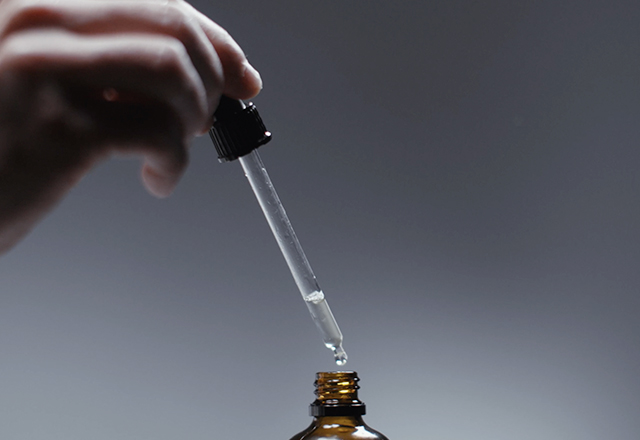
Fast forward
So, while PP405 has the potential to reshape how we approach hair loss, Vila Nova is clear that what he offers at 212.2 Ricardo Vila Nova works now. “The follicles you’ve protected today are the ones that will respond tomorrow,” says Vila Nova. In other words, while the industry waits for PP405 to clear the regulatory finish line, the fundamentals haven’t changed: protect your follicles early, optimise your scalp environment, nourish your body, and intervene before loss becomes advanced. That way, if PP405 does arrive, you’ll be ready to make the most of it.
To start your hair growth journey book your Hair DNA Scan below.


